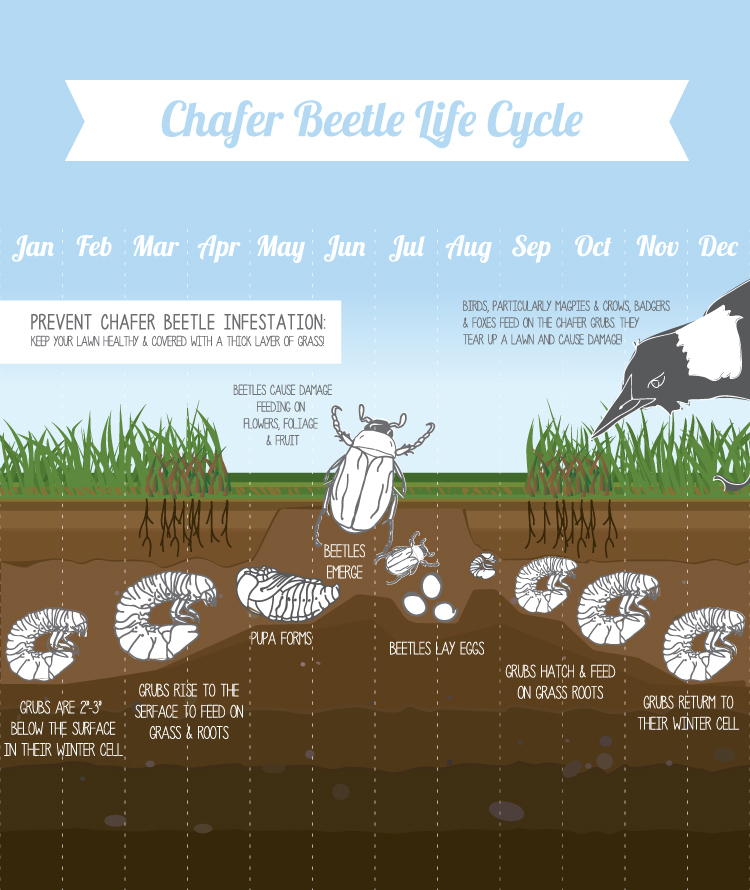What are chafer grubs?
Chafer grubs are the soil-dwelling larvae of chafer beetles which feed on the roots of grass.


Symptoms
Some species of chafer grub eat the roots of grasses and other plants. Evidence of their activities can be seen in a number of ways:
- Damage to lawns is most obvious between autumn and spring when the grubs are reaching maturity
- Patches of the lawn may become yellowish
- Birds, particularly of the crow family (e.g. jays, magpies, rooks and crows), and badgers and foxes tear up turf in order to access the grubs to feed on them
- Chafer grubs can be found in the soil under the loose turf. They have stout white bodies curved in a C shape, light brown heads, with three pairs of legs at the head end.
Control
Non-chemical control
- Repair damaged turf by re-sowing with grass seed or laying turf in April when the chafer grubs have moved deeper into the soil to pupate
- Poorly maintained lawns are thought to be more susceptible to damage, so attention paid to feeding, watering and moss prevention may help avoid damaging infestations
- Biological control: You can buy pathogenic nematodes, usually Heterorhabditis bacteriophora, which attack the larvae by infecting them with a fatal bacterial disease. These microscopic animals can be watered into the lawn when the ground is moist and soil temperature range between 12-20ºC (55-68ºF). The turf around the edge of affected areas should be targeted to deal with larvae spreading. However, by the time areas of infestation become apparent, the soil may be too cold for nematodes to be effective. As a preventive measure, apply nematodes in July to September.